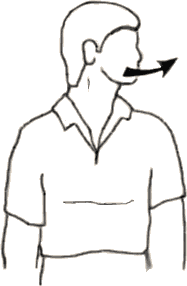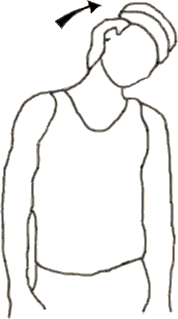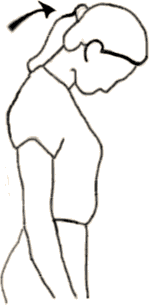Archive for June, 2010
 A learning brain learns best with color, movement, and gentle learning music
A learning brain learns best with color, movement, and gentle learning music

I just published my first article for today (Saturday, June 12, 2010, in the morning), entitled: “Brains love movement & ‘take-a-break’ music (and maybe even a power nap?). If you wish to review that article, simple click on the title immediately below:
Brains love movement and “take-a-break” music (plus . . . maybe even a power nap?)
Someone reminded me that that is true for working brains. They do need a break from working and learning.
What about a learning brain in the very act of learning?
Herewith, my second article for today (Saturday, June 12, 2010, in the afternoon), entitled: “A learning brain learns best with color, movement, and gentle music.”
A brain that is actually in the process of learning–a learning brain–also likes movement, even while engaged in the very act of learning. Complex as the brain is, it still loves the simple things (color, movement, and gentle music), to help it learn more easily and remember better, stronger, longer.
What do you mean by color?
If you study and learn using pastel-colored paper with regular pens and pencils, or using multi-colored pens or pencils on regular white paper, you engage a part of the mind that loves color and enhances learning. Working on a blackboard at school (if it is colored green, as most are nowadays), with or without colored chalk, also stimulates the brain for most efficient learning.

If you can find ways to move your body while learning or studying, you will jump ahead of the class. 😮 An example at home might be jumping on a rebounder (mini-trampoline) while memorizing something you may have found not easy to memorize before. An example from the classroom might be squeezing a small soft sponge ball in your left hand while writing with your right hand (or vice versa if you are left-handed), which engages a part of your brain that loves physical movement and will help you learn better if you move part of your body in some way. Even chewing gum is helpful, although most teachers prefer this to be done at home. 😮
What do you mean by gentle music?
Not rock. That will just make your body want to move, while nullifying your thinking brain. 😮
The learning brain loves music that is swinging low and easy, about one beat per second or 60 beats to the minute, sometimes called “baroque” music. This engages a part of the brain that amplifies learning. Hey, you zing to the head of the class.
“Uprightness” is also needed for most efficient learning
This is a good topic for a future article. [See P.S. below for future article.]
Blessings and Friendship,
Doc Meek, Saturday, June 12, 2010 (2nd post, in the afternoon)
At Sherwood Park, Alberta, CANADA; not at South Jordan, Utah, USA
P.S. Click on the title below for this future article, published Thursday, June 24, 2010:
The learning brain needs “uprightness” for greatest efficiency
 Brains love movement and “take-a-break” music (plus sitting exercises & maybe even a “power” nap?)
Brains love movement and “take-a-break” music (plus sitting exercises & maybe even a “power” nap?)
Photo from: www.lumosity.com/blog/benefits-of-power-napping/ …………………………………………………………………………………..
When was the last time we gave our brain a break?
We are not just talking about a weekend or a holiday here.
We are wondering if we have learned (yet) to give our brain a break, whether sitting at school or sitting in the workplace. Or sitting studying, or sitting working at mental tasks at home? How about working on the computer?
[ Or even just “potato couching” in front of the TV? 😮 ]
All that is needed is to stop our brain task momentarily, stand up, take several deep breaths, and “shake, rattle and roll,” using our best singing (or non-singing) voice if possible. 😮
If it’s a public place and elaborate physical displays are not appropriate, simply stand, take three deep breaths, stretch our arms to the ceiling, and sing silently to ourselves, eh? 😮
Or we might just have to stay sitting, take three deep breaths, wiggle our feet and hands under the desk, smile . . . lean back . . . smile deeply . . . and everybody will wonder what we’ve been up to. 😮
Add some “take-a-break” music (earphones if in a public place) and hey, we’re “up, up and away” with our brain! Like Superman or Superwoman eh!
What’s a “power” nap?
It’s a short nap taken during the day (right after lunch?), perhaps 10 to 20 minutes in length (not too long or you’ll wake up groggy). It’s purpose is to refresh our body and brain for the ongoing daily tasks.
You would think that if you are chronically sleep-deprived, this would be just the ticket. And it might be, dependent upon how sleep deprived you actually are. Sadly, if you are seriously sleep deprived the “power” nap may “backfire,” leaving you more groggy than you were before you took the nap. In this case, do something about your ongoing sleep deprivation overnight before your body or mind stop you with symptoms and illnesses of various kinds (physical and mental). Does this motivate you? Or not?
How about some simple “right-at-the-desk” stretches?
Exercises below from this website address (copy and paste into your web browser):
http://www.womensheart.org/content/Exercise/stretching_exercise.asp
Stretches for side of neck:
|
 |
Stretches side of neck
|
 |
Stretches back of neck
|
 |
Stretches side of shoulder and back of upper arm
|
 |
 “A library is thought in cold storage.”- Penned by Herbert Samuel [Samual?]
“A library is thought in cold storage.”- Penned by Herbert Samuel [Samual?]
Librarians’ duty was to guard the doors
I remember when I was in grade school, more than half a century ago now.
The librarians thought it was their duty to guard the doors to the library, lest the students get in, take books off the shelves, and damage them.
Nowadays, the doors are open and the books are often displayed in open racks, inviting students to pick them up. What a nice change. “Books are to be read and enjoyed,” not guarded from overuse.
Picture from Shoemaker Elementary, Macungie, PA
And the computers are in the library as well. The internet has brought multiple, multiple libraries to the students’ fingertips (literally).
Some technical people have insisted numerous times that the day of the hard-copy book is dead and gone.
Somehow though, it persists, and will persist.
There is nothing like a good book in your hands to curl up with, like an old friend.
Curling up with a computer just does not have the same appeal. 😮
Besides you an go backwards and forwards in a book in a way you cannot on a computer, and mark special passages. Take anywhere. No electrical power source needed. At least in daylight. How about at night? Even a candle might be enough, eh? 😮
Enjoy real books, if you can.
They will always be here, and there.
To love.
To cherish.
To read.
To have.
To hold.
Forever.
Sounds like a good marriage, doesn’t it? 😮
Perhaps it is.
Doc Meek, Friday, June 11, 2010
At Sherwood Park, Alberta, CANADA; not at South Jordan, Utah, USA
 Brain nutrients: Sunlight, Oxygen, Laughter (SOL)
Brain nutrients: Sunlight, Oxygen, Laughter (SOL)
False fad of sunshine avoidance
“Sol” was the name the Romans used for the sun. This basic for life was worshiped by them.
We don’t need to worship the sun; we do need to stop avoiding it.
 Photo from website address below: Photo from website address below:
http://www.saibharadwaj.com/blog/2010/01/give-me-some-sunshine-lyrics-3-idiots-2009/ |
A false fad–yes, false fad–has grown up in our culture in recent years. Some misleading and misguided “scientific studies” seemed to show that sunlight causes melanoma (serious form of skin cancer). Trouble is, most melanoma is on the body in unexposed areas, and the people with the most melanoma are in northern sun-starved climates and working in sunless indoor environments.
Worse, the commercial sunblock we have been told to slather on contains carcinogenic (cancer causing) ingredients. How’s that for utter irony, eh? Sure enough, as sun avoidance climbed, and sunblock sales climbed, so did skin cancer rates. Wow. Talk about being sold a bill of goods by “science.”
We could be using harmless substances, such as zinc oxide, to very effectively screen us from sunburn (which can be problematic, and can indeed tend towards possible skin cancer later). However, no one wants to slather on stuff that makes them look like a ghost or a whitewashed statue. Apparently there are some natural non-carcinogenic sunblocks. Not easy to find. Some could be fake “natural” maybe? 😮
So let’s get it straight, once and for all: sunlight does not cause cancer; sunburn can.
So let’s get out in the sunlight and fresh air and walk and talk and laugh as often as we can. And leave our glasses off. We’ll use a hat instead. We need “raw sunlight” (no glasses) to get the full health benefits of “fresh sunlight.”
(We simply have to remember not to stay out too long and get sunburned, OK?)
We can walk in the rain.
And leave our umbrellas behind. Just kidding. 😮
My recipe for good brain function?
A qualified environmental neurologist told me the other day that SOL directly affects for good 14 body systems and subsystems that we desperatively–that’s my word :o–need to function for good health. I believe him.
SOL? Sunlight, Oxygen, Laughter. 😮
Cheap, effective and right at hand, eh?
So let’s go get some SOL! 😮
Doc Meek, Friday, June 11, 2010
At Sherwood Park, Alberta, CANADA; not at South Jordan, Utah, USA
 “Reading . . . worth mastering forever.” – Doc Meek
“Reading . . . worth mastering forever.” – Doc Meek
“I’ve always loved reading.” – Doc Meek
I found that reading takes me into realms of knowledge about people, places and things . . . and everything! I can soar to the moon and on to the cosmos, plummet the depths of the sea, and do everything in between.
And I can go backwards and forwards in time, and remain in the moment of now if I want to.
“Paying attention to now is a gift. That’s why they call it the present.” 😮
Who gave me this quotation (I can’t remember right now)?
I can read slow and savor. I can read fast and furious [speed, not affect 😮 ]. Or I can read a mile a minute, if I have to. If I want to. (Using Photoreading, courtesy of my friend Dr. Paul Scheele and The Learning Strategies Corporation).
Fun to read a big book in 10 – 12 minutes, eh?
A guest blog from Sean Stephenson
Just got an email from Sean Stephenson on the topic of reading. I enjoy his blithe spirit.
Here’s Sean’s article from his blog (copy and paste Sean’s URL below into your computer’s browser line to access his website):
http://www.livingatcause.com/blog/563/readers-are-leaders/
Readers Are Leaders
Reading is an invaluable asset that helps us shape our thoughts and actions. By reading, we can unlock our true potential at earth-shattering speeds.
When we allow ourselves to be immersed in new ideas and foreign concepts, we expose our minds to a new way of thinking. These new perspectives help us gain a competitive advantage over others – and the best part about it, is reading is virtually free! (other than our time of course. :o).
“The more that you read, the more things you will know. The more that you learn, the more places you’ll go.” – Dr. Seuss
- The Magic of Believing by Claude M. Bristol
- The Alchemist by Paulo Coelho
- The Four Agreements by Don Miguel Ruiz
- One Small Step by Robert Maurer
- As a Man Thinketh by James Allen
- Mastery by George Burr
- Get Off Your But by Sean Stephenson 😮
Love life,
Sean
P.S. Please leave some of your own recommendations in the comments! I’d so love to hear them.
Above guest article from Sean’s blog (copy and paste Sean’s URL below into your computer’s browser line to access his website):
http://www.livingatcause.com/blog/563/readers-are-leaders/
Blessings, Doc Meek, June 10, 2010
At Sherwood Park, Alberta, CANADA; not at South Jordan, Utah, USA
P.S. Like Sean says:
Please leave some of your own book recommendations in the comments! I’d so love to hear them!
 “Honor is better than honors.” – Abraham Lincoln
“Honor is better than honors.” – Abraham Lincoln


They called him “Mr. Integrity”
My Dad, James Collins Meek II, worked for West Kootenay Power & Light Company (WKP&L) in British Columbia (BC), CANADA, for 42 years. Ultimately he became the supervisor for WKP&L in the Kelowna District. The company men in Kelowna dubbed him “Mr. Integrity.” They had many reasons for doing this.
One of the reasons they called him “Mr. Integrity” was that he always made sure that he spent company money as if it were his own money. And he was very responsible with his own money. One of the results was that the “integrity disease” became contagious and the men who worked for him caught the “disease” as well. This made for an honest and frugal operation, which the company greatly appreciated of course.
Dad also made sure that he gave value for his own personal labor dollar. It was important to him not to “waste time” on the job. Over time, his men followed suit. It became part of the culture of the company group.
What’s this got to do with learning?
Even respect and integrity can be learned.
The Retirement Celebration Joke
Karl Wolfe worked for my Dad in the Kelowna office of WKP&L, right up until the time my Dad retired. Karl had built a miniature electrical substation switchboard to be used to play a retirement celebration joke on my Dad.
The plan was to have Dad try to figure out how to make the correct critical sequence of electrical switching moves for several hypothetical high-voltage lines. This switching job was supposed to get the electrical power back on to an area whose high-line power source was down and out.
Then, because it was a very complex sequence of switching moves, the joke idea was to have him surely fail, sounding a big alarm buzzer. Whereupon one of “the boys” was going to pull the main switch for power to the hall we were in for the retirement party, plunge everything into darkness, and blame my Dad for the ensuing chaos.
“You’ve made a big mistake in the power switching!” they were going to yell. “You’ve made the power fail–all the way back to the hydroelectric dam power source!”
“Region-wide failure!”
All in “good fun” of course.
So the trap was set
Here’s where the integrity comes in. In multiple forms. Watch.
My Dad got up to face the challenge of this miniature switching panel. He could see this was a complex matter. He felt it would be a personal embarrassment if he failed in both his electrical knowledge and in his duty to protect the power delivery, even in this purely hypothetical case.
He knew nothing about the planned joke of course. He figured his men were simply giving him his “final test” in the power industry, prior to his retirement.
[Aside to the reader: power industry people see themselves as having an almost sacred duty to keep the power flowing, no matter what.]
My Dad looked at the complex switching task facing him, and knowing Karl Wolfe was a man of integrity, silently reasoned, “Karl built this switchboard, so I know he would not design it so as to guarantee failure and embarrassment. There is a way through, complex though it may be.”

Failure is not an option
My Dad just could not bring himself to fail in the power industry, even in this hypothetical case.
So he put his knowledge and experience to the test, worked methodically through the complex switching sequences, and wow! He got through it successfully without creating any massive power failures. Or little ones either. Bingo! The switchboard gave the “power restored” signal and Dad sat down satisfied.
All the men sat around dumbstruck.
The guy had succeeded, against all odds! They couldn’t play out the joke because he hadn’t failed!
[Personally, I would have just sounded the buzzer anyway, pulled the switch on the hall power, plunged the place into darkness, and played out the big “power failure” joke on my Dad anyway! :o]
The men had too much integrity for that. They had too much respect for my Dad.
The joke was based on Dad’s failing and he did not fail.
They honored his success.
To integrity!
Doc Meek, Sunday, June 6, 2010
At Sherwood Park, Alberta, CANADA
P.S. Contrasting News Item:
The money and valuables found in [this one drug lord’s house] would be enough to pay for health insurance for every man, woman and child in the USA for 12 years! There are believed to be approximately 27 more [drug lord houses in this particular country] not to mention the ones in other countries who are enriching themselves in the drug trade. These people have so much money, they make the Arab oil sheiks look like welfare recipients. Their money can buy the best politicians, the best cops, the best judges, whatever they need they just throw down stacks of cash and it is theirs! This is why the drug problem is so difficult to fight.
 |
 |
 |
 “A paper brain is a good thing to have.” – Doc Meek
“A paper brain is a good thing to have.” – Doc Meek
|
|||||||||||
Images from: http://www.ataglance.com/ ………………………………………………………….
Your own personal paper brain–any size you like 😮
For years, professionals of all types have been using appointment books, pocket diaries, or day-books to help them keep track of busy days. Mothers of all types have been using home bulletin boards, daily diaries, or refrigerator calendars to help them keep track of busy days for themselves and children and husbands, a complex task indeed.
These paper brains are invaluable. I always encouraged the students whom I was helping to overcome learning problems to carry a paper brain. I always told them that a paper brain was probably the best friend their brain could have.
Some professionals, mothers, and students have now turned to electronic “keeper-trackers” to help them through their often over-scheduled days. These have been dubbed “PDAs.”
What’s a PDA?
Some of the earlier PDAs (Personal Digital Assistants) were simply electronic versions of paper brains, except that the available “writing space” or “memory space” was much larger. These earlier PDAs had no connection to the internet. Wireless functions are not required for a simple paper brain equivalent.
According to Wikipedia, a PDA is “a personal digital assistant (PDA), also known as a palmtop computer . . . a mobile device which functions as a personal information manager and has the ability to connect to the internet. The PDA has an electronic visual display enabling it to include a web browser, but some newer models also have audio capabilities, enabling them to be used as mobile phones or portable media players . . . . Many PDAs employ touch screen technology.”
Can we keep up with our paper brain (or electronic equivalent)?
Even though our busy schedule may not overtax the paper brain or the electronic brain, our busy schedule may overtax us, personally. Our brain may be running on overload. And over-loaded brains, sooner or later, bring with them possible anxiety, burnout or depression.
What’s one answer?
Scheduled time for ourselves.
For ourselves alone, private time.
Of course we have to put this appointment with ourselves faithfully into our paper brain or our electronic brain, or it won’t happen.
Book it, and keep it. Then we’ll reap the rewards of a busy day with a real plus:
Time for us.
Of course, you have to consult the paper brain 😮
Sometimes someone may upbraid me for missing an appointment: “You should book your appointments in your paper brain; that’s what others do; that’s what you teach your students.”
My reply?
“I did book it.”
“Then why did you miss this appointment.”
“I did not remember to look in my book.” 😮
Hey, even the best of well-intended systems can break down occasionally, eh? 😮
Summary and Conclusion
In our modern world, anxiety, burnout and depression can be kept at bay by keeping solid appointments with ourselves for scheduled quiet time. The brain loves it. It absolutely needs the respite, and more than that, the brain needs the time to attend to different, vital and important tasks not normally addressed.
Way to go, paper brain (or PDA), for looking after me!
Doc Meek, Saturday, June 5, 2010
At Calgary and Cochrane, Alberta, CANADA; not at South Jordan, Utah
 “A cold . . . causes less suffering than an idea.” – Jules Renard
“A cold . . . causes less suffering than an idea.” – Jules Renard
“A cold in the head causes less suffering than an idea.” – Jules Renard

Image from URL below:
http://www.cdc.gov/getsmart/campaign-materials/print-materials/FactSheet-RunnyNose.html ……………………………………………………………………………………………
Speaking for myself, when I have been involved in an activity, such as teaching or parenting, and I have developed (or learned by default) a set of activities, behaviors, and ideas, I tend to stick with them out of sheer practice. I do what I do. I am used to it, and I may not even question it. Especially I don’t question my own practices if I am so lucky as to feel a modicum of “success” in doing these things.
What a shock then, when unfolding events prove I have “missed the mark,” as it were, and failed to address the right set of parameters.
One example may suffice for now. This topic will require more discussion later I am sure.
Suppose I am teaching someone to read (or any other relatively complex task). I use the conventional methods that I know and perhaps some less-known methods as well, particularly if the student or child appears to be struggling with this new learning.
No matter the amount of effort I make, the learner doesn’t “get it.” I grow frustrated and try harder. Doing about the same things of course.
As Einstein said, “Doing the same things, and expecting a different result is insanity.”
The learner, meanwhile, looks around and sees that others are “getting it,” no problem, and concludes, “What’s the matter with me? I must be dumb.” And later, if the failure keeps up, “I am no good.” This is a killer of future potential, just as surely as a smashing car wreck.
Sometimes, the pupil just quits, “knowing” they are “never” going to “get it,” “never” going to “make it” to success.
Here I thought I was teaching reading (or whatever). I bent every effort in that direction. After all, learning to read is an important skill, right? A very important skill as a matter of fact! So I just keep flailing away . . . for the sake of the learner, you see?
So here’s the painful new idea:
I am not teaching reading (or whatever the needed skill is). I am teaching the learner how to fail. How to feel badly. Or worse: how to feel worthless. And how to give up hope!
Is this what I intended to teach? Of course not.
Now what?
Now it is me who feels like a failure. I feel badly. I may even want to quit. I may give up hope!
Teaching and parenting is like that. If you let it be.
Time out to seek a new idea, or many new ideas about how to teach learning success, not learning failure.
Yes. For the sake of the pupil. And me too.
Doc Meek, Friday, June 4, 2010
At Sherwood Park, Alberta, CANADA; not at South Jordan, Utah, USA
 You can’t change students (children) . . . you can care about them . . .
You can’t change students (children) . . . you can care about them . . .
“A teacher who is attempting to teach without inspiring the pupil with a desire to learn is hammering on cold iron.” – Horace Mann
Dr. Merrill Harmin, in his famous book, Strategies to Inspire Active Learning: Complete Handbook [for teachers], gives us the common-sense idea that if a student in the your classroom (or by analogy, a child in your home) is continually acting out of line, you can speak to them privately.
Line Drawing:Teacher lecturing student
From there on, though, his suggestions get seemingly odd.
Dr. Harmin says that the purpose of the private dialogue is just that, to have a private dialogue. Not to give them a lecture. It gets even odder. He then says that the goal of the private dialogue is not–as you might think–to get the student (child) to change his/her behavior.
What? I thought that was the whole idea. “Nope,” says my wise friend.
Guess what?
The goal of the private dialogue is to start to build a relationship between the teacher and the student (or between the parent and the child).
Amazingly, one of the key requirements is for the adult to listen, not the younger person so much. The younger person is not simply an inferior adult. They are persons in their own right, having their own life, and their own preferences about learning and their own dreams and life purposes.
If we as adults wish to actually influence younger people for good on a lifetime basis (not just get them to conform to our momentary demands), it is vital that we listen with respect, even if their performance or behavior is out of line.
The listening with respect, the building of a relationship is the basis for all change (learning).
Astute teachers and mothers know this without being told. Fathers can learn it too. 😮
Caring, Respect, and even Honor,
Doc Meek, Thursday, June 3, 2010
At Sherwood Park, Alberta, CANADA; not at South Jordan, Utah, USA
P.S. We as adults can have a lot of “fun” learning this change within ourselves: caring, respecting, honoring and listening to young people.
It is short-term so satisfying–in a perverse sort of way–to just lecture them. Our egos love it! Our lecture may change their behavior temporarily (as long as we remain present). It will not engender long-term self-responsibility and self-management in the younger person, which is, after all, ultimately the goal of all education (and all family life), right?
P.S.S. Hey this is really wacko! You mean to tell me that the purpose of lecturing . . . uh . . . dialoguing with . . . a younger person is to get me–me–to change (learn), not them? Yup. Real challenge isn’t it? That’s how many students (and children at home) feel about the changes (learnings) being required of them.
Parents (and teachers) may wish to explore the idea that we may be yelling at our kids too much. Copy and paste this URL in your computer’s browser line:
http://ezinearticles.com/?Are-You-Yelling-At-Your-Child-Too-Much?-Nine-Ways-to-Getting-Better-Behavior-from-Your-Children&id=156475
 Good news for teachers, parents and other leaders: “You don’t have to do it all alone . . . “
Good news for teachers, parents and other leaders: “You don’t have to do it all alone . . . “
Parents and teachers often feel as if their parenting and teaching burdens are so heavy, they cannot carry them.
They are right!
There are many sources of help. The problem is that they are not always readily within reach logistically (not always easy to organize or coordinate) or financially (not always easy to afford or pay for).
One extremely valuable resource is immediately at hand, and affordable! The children and students themselves! Right there. Right in front of you, both literally and figuratively.
Using this immediately-at-hand resource may mean changing the way you have tried to carry your load in the past. You can’t do it all alone, so instead of trying to do that impossible task alone, you change your orientation to that of sharing the burden with the very people who are causing the burden in the first place.
This means a distinct change in the type of task upon which to focus.
Here is a ludicrously simple example. If the child/student cannot tie his/her shoelaces, you can continue to tie them “forever” or you can change your task from shoelace tying to that of teaching shoelace tying. Of course teaching the child/student how to tie his/her own shoe laces will take more time and energy than simply doing it yourself. Of course. Except that the teaching will usually result in there being an end to your tying of shoelaces.
Parents and teachers may object that not all tasks are teachable to children/students. Some tasks are non-transferable. This is true.
The principle remains the same however, if you are to have help with your burdens of parenting and teaching.
Instead of expending all your energy doing all the tasks yourself, expend some energy thinking about which tasks are sharable and in what ways.
For example, even little children and those in grade one at school are capable of taking on more than we would ever think if we are aiming in that direction. And a child with a distinct stewardship in the home or classroom will not only remove some of the burden on the parent or teacher, s/he will take pride of ownership and develop self-responsibility more readily in the present and the future, thus gradually removing more and more of the burden of parenting and teaching as time goes on.
Try it. You might be surprised what children and students can do, given the opportunity to learn how.
I have seen examples of cooperative homes and cooperative classrooms in which older children (or even just same-age students) are able to take on sharing/teaching tasks, usually in groups of two or three. Larger groupings may not result in the same efficiencies.
Doc Meek, Wednesday, June 2, 2010
At Edmonton, Alberta, CANADA; not at South Jordan, Utah, USA





